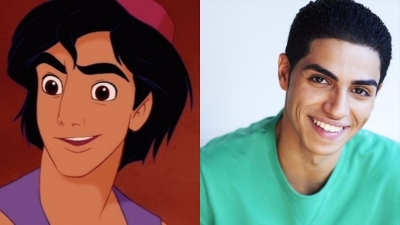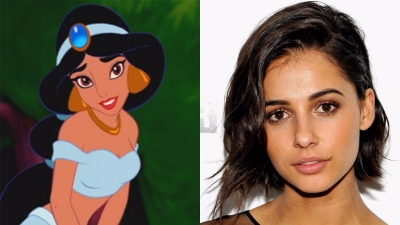On July 15, Disney announced the release of a live-action version of the 1992 animated film “Aladdin” in 2019. The cast was also announced, causing controversy due to Disney’s choice to cast English actor Naomi Scott, in the role of Jasmine, who is supposed to be Arab. Photo Fair Use by IMDb.
Disney will be releasing a live-action Aladdin movie in 2019, and one casting choice is reminiscent of the problems with the original.
Following the recent trend of reimagining animated classics into live-action movies, Disney is slated to produce a live-action version of the 1992 animated film, “Aladdin”. The film will be released in 2019 and has already faced backlash, which traces back to “Aladdin’s” origin.
The original “Aladdin” was a Middle Eastern folk tale, which was first recorded being told by a Syrian man, though it is most well known for being in “One Thousand and One Nights” (“Arabian Nights”). “One Thousand and One Nights” is a compilation of Middle Eastern folk tales told by a narrator, Scheherazade. The stories include “Aladdin’s Wonderful Lamp” and “Ali Baba and the Forty Thieves”.
Disney’s animated “Aladdin” was released in 1992. It was directed by two white men, written by all non-Arab writers, and voiced by an entirely white cast. The movie takes place in “Agrabah”, a fictional city whose name comes from the Indian city, Agra, and Baghdad, the capital of Iraq.
Visually, the artistic team took inspiration from Arab, Persian and Indian architecture, with the Sultan’s palace bearing a strong resemblance to the Taj Mahal.
But the cultural smoothie doesn’t end there.
There are a number of other things in “Aladdin” from the characters’ clothing to the Bengal Tiger, “Raja” (a species which lives in South Asia), that have clearly been pieced together from all across the Middle East and South Asia.
In addition to being a Frankenstein of cultures, the people of Agrabah — particularly the evil characters — have exaggerated stereotypical Arab features. These are features which Aladdin and Jasmine, the protagonists of the story, were not given.
Instead of accurately and positively portraying Arab culture, “Aladdin” is an ignorant amalgamation of cultures that was created for a western audience that perpetuates negative stereotypes about the Middle East.
An example of the effects this has in the real world was found in a 2015 poll. The Democratic polling firm, Public Policy Polling, asked voters a series of questions about the primary election candidates. For fun, they threw in the straightforward question, “Would you support or oppose bombing Agrabah?”.
They found that 30 percent of Republican primary voters and 19 percent of Democratic primary voters would support bombing the fictional country from an animated Disney movie.
On July 15, during Disney’s D23 Expo, the cast for the live-action version was announced and includes Mena Massoud, Naomi Scott (Power Rangers) and Will Smith (Men in Black).
Aladdin from the 1992 film “Aladdin” next to actor Mena Massoud and Jasmine from “Aladdin” next to actor Naomi Scott.
Massoud is Egyptian-Canadian and is perfect in the role of Aladdin. Scott, on the other hand, is English — half British and half Indian. Though Scott isn’t white, she also isn’t Arab and by casting her, Disney continues to group all brown people into one category as if they are interchangeable.
Hollywood doesn’t seem to have trouble finding Middle Eastern actors to be terrorists and cab drivers, so why is it hard for them to accurately cast Jasmine?
Although “Aladdin” does draw from Indian culture, it does so ignorantly, and Agrabah is presented as an Arab country. With Scott cast as Jasmine, one of the only positively — though inaccurately — portrayed Arabs in film is given distinctly non-Arab features.
Instead of taking the opportunity to accurately and positively represent Arab people and culture, Disney continues to clumsily depict them. By doing so, they reinforce these negative stereotypes and misrepresent the people and cultures they profit from.
More from Katie Grace Upchurch


